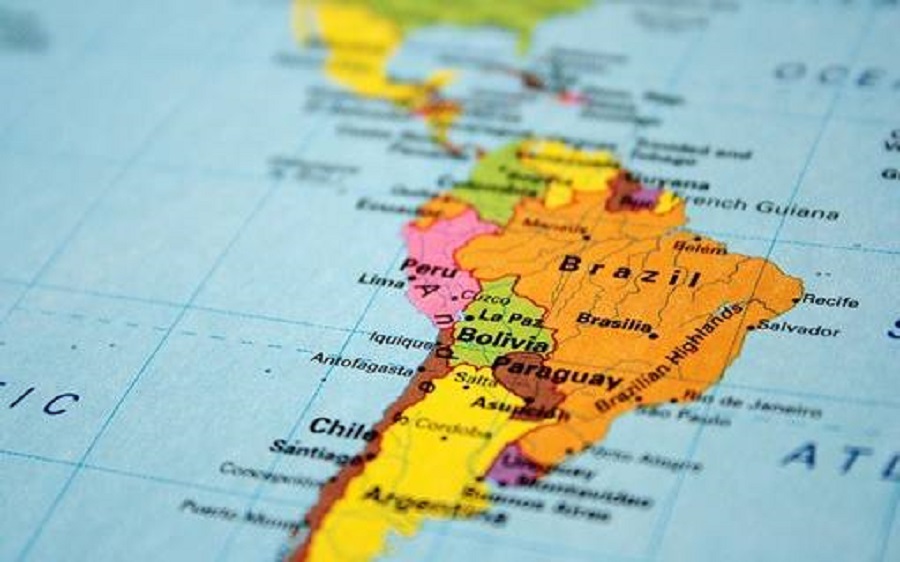RIO DE JANEIRO, BRAZIL – From strict confinements, Latin American countries have moved to intermittent restrictions, forcing the transition to a new economic normal. The region experienced the death of 1.5 million people from Covid-19, while poverty increased, inflation rose, jobs changed and, with them, the outlook for the future.
It is against this background that economic recovery is occurring, different in each country, but with a common denominator: the positive impact of the fiscal stimuli implemented by governments.

September brought the Gross Domestic Product (GDP) data for the second quarter of the year, which enables a picture of the recovery of economies compared to their pre-pandemic levels. The results show that countries that invested in fiscal stimulus to help the unemployed population are leading the way. However, those that have not, have not only lagged behind, but have also lost potential future growth, say the experts consulted.
“We are exactly one year into the start of the recovery process,” says Alfredo Coutino, an analyst specializing in the region at Moody’s Analytics. Most Latin American countries started the economic upturn in the third quarter last year, and in July, most of the region gave the go-ahead for economies to reopen.
“And what we see is that there are two groups of countries: in the first are Chile, Brazil and Peru, with GDP levels close to what they had before the pandemic. In the second group are the countries lagging behind, including Mexico and Colombia.” The GDP of Brazil, Chile, Mexico, and Argentina combined represents 66% of the region’s total GDP.
What the three top countries have in common is that they have invested a large amount of resources in fiscal stimuli, says economist and data analyst Eugenio Sánchez. Amounts that were spent through a combination of programs, direct transfers to the poorest households, loans to companies, tax breaks, and unemployment subsidies – the latter, in particular, was a strategy that allowed employees to return to work normally during the reopening, preserving the company-employee relationship.
“It’s worth understanding what the determinants of long-term growth are, which in this case is the labor force,” Sánchez says by phone from London. “The people incorporated into the labor market and the accumulated capital together determine the installed production capacity of a country and therefore its long-term growth. So when there is any situation like the pandemic, where we force the economy to stop to achieve social distancing and force people to stay home, one sees the destruction of capital.”
Among the largest economies in Latin America, Mexico is the country that has allocated the least additional spending measures as a percentage of GDP. According to the International Monetary Fund (IMF), Mexico has spent 0.7% of GDP on additional measures to contain the pandemic’s damage and refused to grant tax breaks. Meanwhile, Chile allocated 14%, Brazil 9.2%, Peru 7.8%, Colombia 4.7%, and Argentina 4.5%.
Chile, for instance, spent many resources on unemployment insurance and partially subsidized payrolls to prevent companies from going bankrupt and jobs from being lost. Brazil also increased public spending. The result is a faster rebound.
‘EXCESS’ CAUTION
“Mexico is lucky to have such a great economy and to have the United States next door implementing such a great stimulus. However, Mexico would be better off if the government had implemented more fiscal stimulus,” argues Mizuho do Brasil Bank’s Latin America markets strategist Luciano Rostagno.
U.S. officials lowered this year’s growth forecast during the week from 7% to 5.9%. “Mexico was too cautious in its spending, so the economy is suffering because of the pandemic.”
The consequences of this decision are visible in recent data, but will also be seen in the future. “The country lost potential growth,” adds Rostagno, referring to the estimate of how much an economy can grow without suffering inflation issues, “and the reason for that is that it didn’t act to cushion the shock of the pandemic. This affected business sentiment, the deferral of investments, and the loss of the potential growth rate.”
PROTESTS AND INFLATION
Colombia’s state support program boosted the economy until the outbreak of massive protests that turned violent and cost dozens of lives. The disruptions, which lasted for months, impacted the country’s economy, experts say. In turn, Argentina has had inflation over 50% for the past 12 months, which has limited the country’s growth.
“Argentina has had the same structural problems for 3 years now,” Coutino says, “they have been in recession since then and the country started a recovery process after the pandemic in the third quarter last year, but it was more due to an arithmetic rebound that occurred in virtually every economy in the world.”
THE FUTURE
Clearly, there is significant positive growth in Latin America this year, Coutino says. “Now, where is it heading? Our projections allow us to anticipate that after the 2021 economic recovery, Latin America is now headed for a phase of economic expansion.”
Chile, Brazil and Peru will continue to grow this year above their pre-pandemic GDP level, while the other economies, such as Mexico and Colombia, may grow beyond their pre-pandemic level in 2022.
High inflation projections worldwide have prompted a number of central banks to raise their interest rates. “We expect that this will provide support to the region’s currencies in the short term,” Rostagno says, “but in a long-term perspective, politics will continue to be a headwind.” The region is facing an intense election season this year and next, and the pandemic has increased discontent with governments.
“This increases the risk of populist politics,” Rostagno says, “Argentina, Chile and Colombia are next with challenging elections ahead. In Brazil, general elections are still a year away, which gives it time to improve” in terms of political uncertainty.

